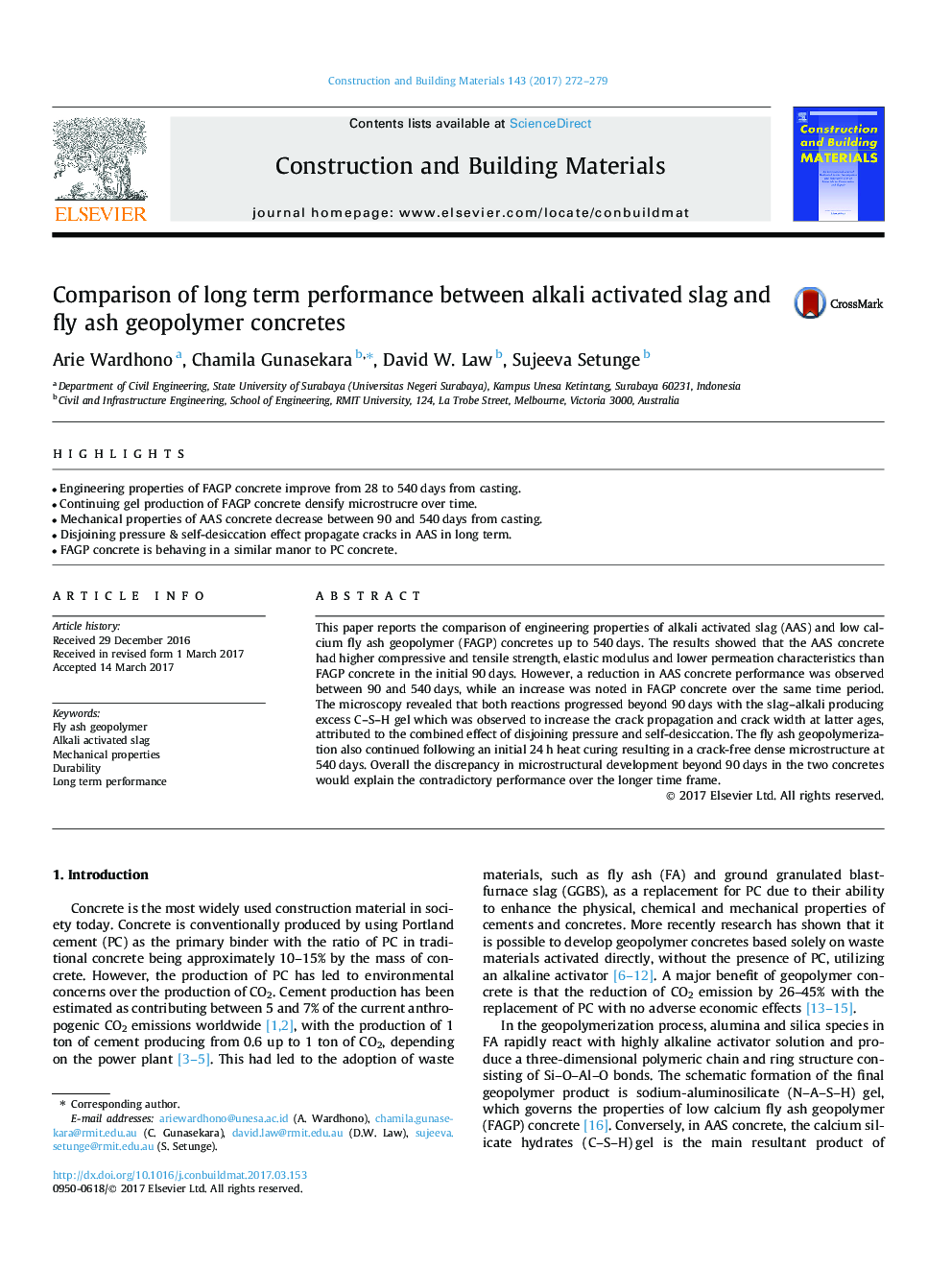| Article ID | Journal | Published Year | Pages | File Type |
|---|---|---|---|---|
| 4913238 | Construction and Building Materials | 2017 | 8 Pages |
Abstract
This paper reports the comparison of engineering properties of alkali activated slag (AAS) and low calcium fly ash geopolymer (FAGP) concretes up to 540Â days. The results showed that the AAS concrete had higher compressive and tensile strength, elastic modulus and lower permeation characteristics than FAGP concrete in the initial 90Â days. However, a reduction in AAS concrete performance was observed between 90 and 540Â days, while an increase was noted in FAGP concrete over the same time period. The microscopy revealed that both reactions progressed beyond 90Â days with the slag-alkali producing excess C-S-H gel which was observed to increase the crack propagation and crack width at latter ages, attributed to the combined effect of disjoining pressure and self-desiccation. The fly ash geopolymerization also continued following an initial 24Â h heat curing resulting in a crack-free dense microstructure at 540Â days. Overall the discrepancy in microstructural development beyond 90Â days in the two concretes would explain the contradictory performance over the longer time frame.
Keywords
Related Topics
Physical Sciences and Engineering
Engineering
Civil and Structural Engineering
Authors
Arie Wardhono, Chamila Gunasekara, David W. Law, Sujeeva Setunge,
